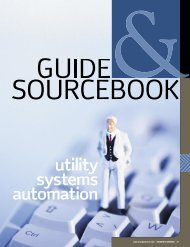FERC vs NERC: A grid control showdown over cyber security
FERC vs NERC: A grid control showdown over cyber security
FERC vs NERC: A grid control showdown over cyber security
Create successful ePaper yourself
Turn your PDF publications into a flip-book with our unique Google optimized e-Paper software.
WWW.INTELLIGENTUTILITY.COM /// JULY/AUGUST 2011<br />
18<br />
When Congress passed the Energy Policy Act of 2005, it was<br />
a statute that had actually been negotiated in about 2003. So<br />
the provisions in that statute were dealing with the world as<br />
we knew it in 2003.<br />
There was concern that not enough capital was going<br />
into transmission relative to generation. Also, the concern<br />
was that we needed<br />
enough transmission<br />
to ensure that<br />
these new competitive<br />
generators could<br />
get to market, and we<br />
were seeing “congestion”—or,<br />
in other<br />
words, not enough<br />
transmission.<br />
But by 2006, when<br />
the commission implemented<br />
its order,<br />
we were starting to<br />
get more build-out<br />
of transmission. So<br />
the debate was, “Do<br />
we need incentives<br />
now for building out<br />
transmission?” And<br />
some commissioners<br />
thought, “Yes,” and some commissioners said, “It should be<br />
tailored to different kinds of projects.”<br />
As we’ve seen this incentive program implemented from<br />
2006 till now, the industry has changed even more. The new<br />
public policy issue is transmission for getting to new renewables,<br />
to reach renewables and bring them to market.<br />
INTELLIGENT UTILITY How should the commission consider<br />
changes in cost estimates?<br />
KELLY The question is: When a utility says it’s going to cost<br />
$800 million to do this transmission project, should the<br />
commission use that cost estimate?<br />
If the commission then awards “construction work-inprogress”—allowing<br />
the utility to start rec<strong>over</strong>ing investment<br />
costs while construction proceeds—should the commission<br />
hold the utility to the cost estimate as a cap, as an<br />
alternative way of containing costs?<br />
The argument on the other side is: If that’s the approach<br />
the commission takes, everybody’s going to say, “It’s only<br />
an estimate—you never know how much it’s really going<br />
to cost.” So if that’s the commission’s policy, you’re going to<br />
send a signal that people should highball the cost estimates.<br />
INTELLIGENT UTILITY What other factors should the<br />
commission consider in implementing the law?<br />
REGULATORY INTEL<br />
KELLY We have to ask: What’s the commission’s goal<br />
going to be?<br />
Should the commission look at a project and say, “How<br />
risky is this? How hard is it to get permits? How difficult<br />
is it to build? Should we give incentives to help <strong>over</strong>come<br />
particular barriers and difficulties associated with the<br />
particular project? Or do we look at what the project is going<br />
to accomplish from a public policy perspective?”<br />
In other words, is this—from a public policy perspective—<br />
the kind of project we want to incentivize or maybe even<br />
reward? Say, reaching renewables, or bringing in Canadian<br />
hydro, or building a tie-line to Canada, or a project that has<br />
the potential to interconnect the three <strong>grid</strong>s.<br />
Or a third possible way the commission could approach<br />
this is the way it approaches the building of natural gas<br />
pipelines, which is to say, “It’s all important—the build-out<br />
of pipelines is an infrastructure we want to encourage.” So<br />
the commission could say, “At this stage in the evolution of<br />
our <strong>grid</strong>, we just need more transmission, and we want to<br />
encourage it. So we’re going to give incentives to every<br />
transmission project.”<br />
INTELLIGENT UTILITY How do you view future electricity<br />
transmission—in 2015, or 2020?<br />
KELLY It has to do with, “Where are we headed?” We<br />
usually build transmission because we need more transmission.<br />
But if we don’t<br />
need more generation<br />
or need to move genera- “ The new public policy<br />
tion from one place to<br />
issue is transmission<br />
another, we don’t need<br />
more transmission.<br />
for getting to new<br />
Having said that,<br />
however, there are states<br />
renewables, to reach<br />
that are pursuing renewable<br />
portfolio stan-<br />
renewables and bring<br />
dards: Texas, California,<br />
Colorado, New England<br />
them to market.<br />
to an extent, New York<br />
”<br />
to an extent are pursuing<br />
bringing new generation on line. And we are also seeing<br />
the potential for replacement of existing generation with<br />
new generation. So we will need transmission.<br />
INTELLIGENT UTILITY Is there one point you’d like to<br />
make that we haven’t discussed?<br />
KELLY The one point I’d like to make is that achieving<br />
a consensus on what we are trying to accomplish with<br />
transmission is, first, the key to a good transmission policy<br />
and, second, the most difficult thing to achieve.<br />
Phil Johnson is a freelance writer and speechwriter.


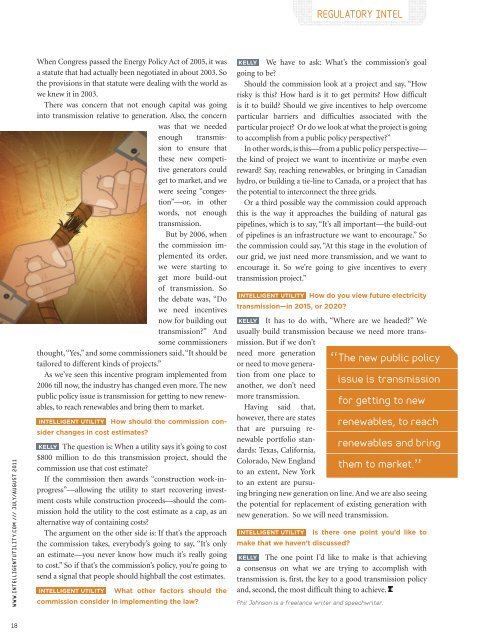
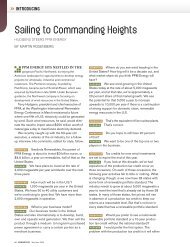
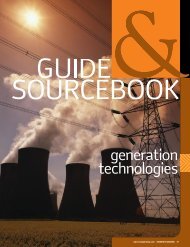
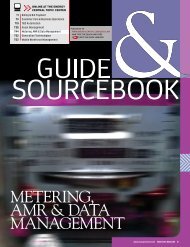

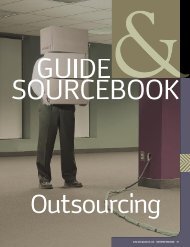



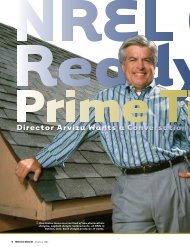



![View From the Trenches [PDF]](https://img.yumpu.com/18854438/1/190x252/view-from-the-trenches-pdf.jpg?quality=85)
